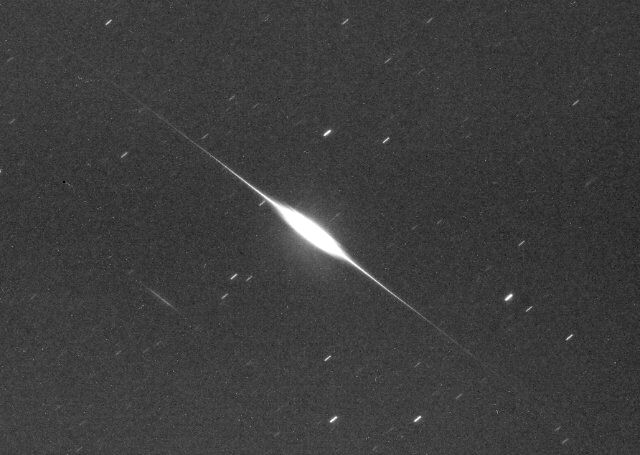
Iridium satellites' sole purpose is to assist in global communications (digitized phone calls, wireless electronic mail
etc) and number 66 in total now that current orbiting plans are complete where eleven satellites have been allocated to
six equally-spaced orbital planes covering the entire surface of our planet (original plans called for eleven satellites
across seven orbital planes and, hence, for the name Iridium which represents the 77th element of the periodic table).
These satellites are placed in low-earth orbit and completely circle our planet every 100 minutes (or 14.34 times/day).
Iridium flares represent the unique occurrence in space and time where the panels of the satellite perfectly redirect
the solar or lunar light onto an observer on the planet's surface. Aside from the silhouette images that one can capture
during a solar transit, Iridium flares represent the only other means by which a ground-based observer can detect or
observe a satellite during the day. With a peak magnitude of about -8.4, these flares can easily compete with a
well-developed crescent moon during darkness and can be quite visible during the day as well.
|
USSPACECOM Cat No: 25104 Satellite: Iridium 45 Orbit: 776 x 779 km, 86.4° Range (Photo): 1031 km Mag: -8.1 Mag at Flare Center: -8.1 Dist from Flare Peak: 0.5 km west Azimuth (Pass): 133° Altitude (Pass): 48° Launch Date (UTC): December 20, 1997 |
 |
Date: Oct 05, 2001 20:43 UT+3 Location: Athens, Greece Equipment: Argus Cosina STL 1000 Cosinon 55 mm @ f/2.8 FUJI Superia 400 Exposure: 40-sec Software: Photoshop V6 Processing: JPG Compression |
